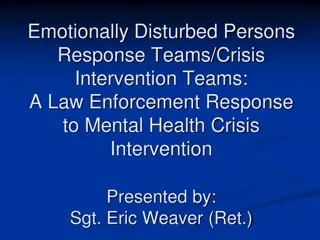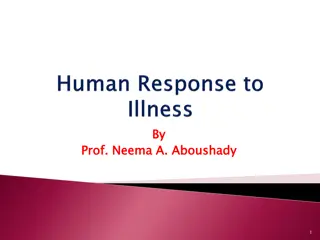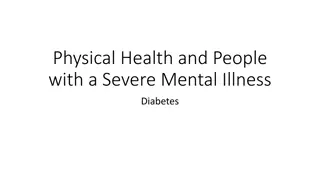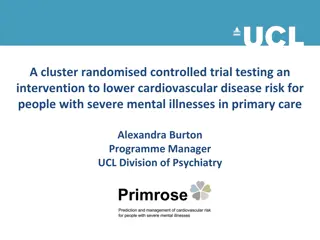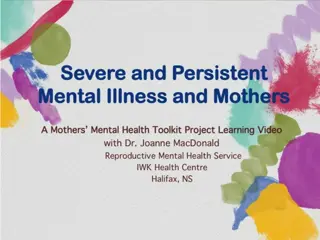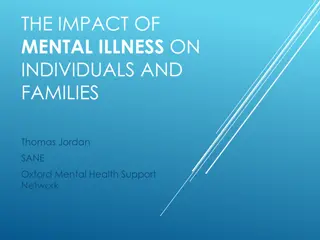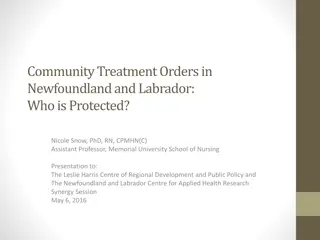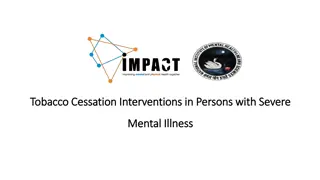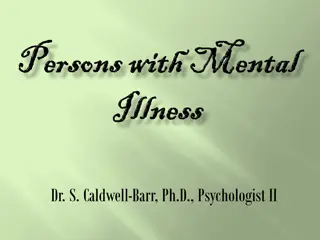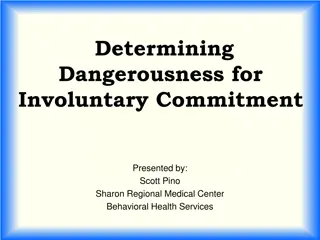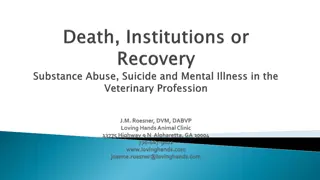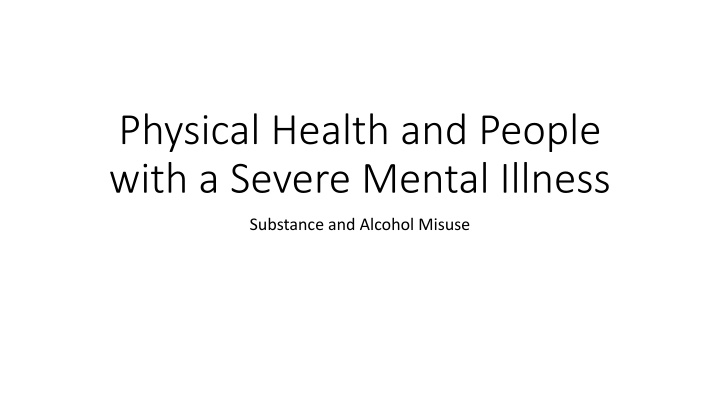
Physical Health and People with Severe Mental Illness
People with severe mental illness often face challenges in managing their physical health, including substance and alcohol misuse. This slide set is a teaching aid designed for healthcare professionals to address these issues in a clinical setting. It focuses on the importance of addressing harmful alcohol use, substance misuse, and associated health risks in individuals with severe mental illness. The content includes learning objectives, a clinical background of a fictional patient, Amir, and key considerations for healthcare providers when managing the physical health of individuals with severe mental illness.
Download Presentation

Please find below an Image/Link to download the presentation.
The content on the website is provided AS IS for your information and personal use only. It may not be sold, licensed, or shared on other websites without obtaining consent from the author. If you encounter any issues during the download, it is possible that the publisher has removed the file from their server.
You are allowed to download the files provided on this website for personal or commercial use, subject to the condition that they are used lawfully. All files are the property of their respective owners.
The content on the website is provided AS IS for your information and personal use only. It may not be sold, licensed, or shared on other websites without obtaining consent from the author.
E N D
Presentation Transcript
Physical Health and People with a Severe Mental Illness Substance and Alcohol Misuse
Using this slide set This slide set is one of four, designed to be a teaching aid in the management of the physical health of people with a severe mental illness. The slide set should be used with the accompanying fact sheet on alcohol and substance misuse disease. The slide set is based on a consultation with Amir, an imaginary patient. Each slide set poses a separate set of clinical issues for the Family Doctor and their team. However, there is a chronology to the slide sets, and this slide set represents the fourth of four consultations with Amir. This slide set can be used in a small group setting, to prompt discussion on the care of people with a severe mental illness. The audience might be a primary care team of health care professionals, a joint meeting between mental health and primary care doctors, or a postgraduate educational meeting.
The Context 46% of people with a severe mental illness have a Non Communicable Disease (NCD) They die 15 20 years earlier than they would have done if they had not had a severe mental illness Causes of this premature mortality include: Genetics Deprivation Medication Lifestyle Health professionals attitudes
Learning Objectives Clinical Harmful alcohol use is more common and is associated with increased mortality Substance misuse is more common People with SMI are at greater risk from blood borne viral (BBV) diseases Organizational Communication with the mental health team is essential Sharing clinical information is essential Primary care team members are essential nursing, care coordination, dietitian, community care worker (when available)
Amir Clinical Background: Amir is a 38 year old man PMH: Schizophrenia diagnosed 22 years ago Diabetes Raised cardiovascular risk score (QRISK2 27%) Family History: Both parents have diabetes Smoking History: recently stopped smoking Social History: no record of employment status
Amir Issues for the Clinician Is Amir using alcohol or street drugs? Has he been using them in the past and if so have they had any lasting effects? What is Amir s view on whether further investigation is appropriate? Fact Sheet Alcohol misuse and BBV diseases are more common Treatment interventions are effective
Amir The reason for the consultation: Amir was recently discharged following a five month admission for schizophrenia. During this admission his medication was changed to clozapine Following discharge he developed diabetes He stopped smoking, and developed clozapine toxicity as the dose of the medication had not been reduced He is visiting the nurse as part of his diabetic review
Amir During the consultation: Amir apologizes to the nurse for his previous disruptive behaviour prior to his admission He explains that he was drinking much more alcohol than usual The nurse asks about his previous use of alcohol, and if he had in the past, used street drugs.
Amir Issues for the Clinician Does he need advice about alcohol consumption, and if appropriate, treatment? Does he need (and does he want) to be screened for BBV diseases? Fact Sheet Alcohol misuse is associated with increased mortality in this group, and a predictor of hospital admission BBV diseases are more common Treatment with an antipsychotic medication is not a contraindication for treatment for a BBV disease
Learning Objectives Clinical Harmful alcohol use is more common and is associated with increased mortality Substance misuse is more common People with SMI are at greater risk from blood borne viral (BBV) diseases Organizational Communication with the mental health team is essential Sharing clinical information is essential Primary care team members are essential nursing, care coordination, dietitian, community care worker (when available)
Quality Improvement: Can you identify How many patients with a severe mental illness are in your practice population? How many have had an assessment of alcohol use in the last 12 months? How many have been offered screening for BBVs in the last 12 months?





